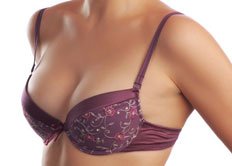Over the years I have seen many patients that struggle with their weight unsuccessfully. Kym, who is a dear friend and has been in the health professional field for years, is one. I have known her for 7 years and she had always been on one diet or another, lost weight, but regained it again.
She attended one of our Lap Band seminar mostly for her daughter’s sake, who was overweight, and decided to have the Lap Band procedure.
She had the Lap Band in 2009 and has so far lost 118 pounds. Kym is more confident as she went from a size 22 to a size 4!
She has graciously committed to be Director of our weight loss support group at Inland Cosmetic. The support group usually meets every last Wednesday of the month. For more details on Kym’s story and dates for our support group, visit our surgical center website at:
https://www.surgicalartsinlandempire.com/lap-band-patient-story-1.html
The Lap Band procedure is performed by Dr. Owens, who is one of the leading experts in Bariatric Surgery. The cost of the Lap Band procedure my be covered by your PPO insurance, so for a quick verification, you may contact the office at 909-579-3111.

The summer may be coming to an end, but don’t forget to keep your skin protected all year round. You should always use at least SPF 30 on your face everyday. Sunblock is essential to prevent sun damage and wrinkles. We have a new Inland Cosmetic Surgery skincare brand SPF 32 sunblock cream with Zinc oxide and Octinoxate. Apply every morning and keep your beautiful skin protected from those harmful sun rays! In addition we have a Vitamin C Serum that is a powerful antioxidant. If applied to the skin prior to the sunblock, it will prevent oxidative damage and make your sunblock more effective by making it last longer.
If you would like to get your personal skin care consultation and VISIA digital skin analysis, you may contact the office for an appointment with our expert aestheticians.
 Patients who had Botox injections and used the Obagi Nu-Derm skin care system were both more satisfied with their results and found greater improvement in overall facial appearance compared to patients who had Botox treatments with placebo, according to clinical trial results.
Patients who had Botox injections and used the Obagi Nu-Derm skin care system were both more satisfied with their results and found greater improvement in overall facial appearance compared to patients who had Botox treatments with placebo, according to clinical trial results.
Obagi Nu-Derm works by exfoliating and stimulating cell turnover, so skin behaves and looks younger.
Lead researcher Joel Schlessinger, MD, a dermatologist, said that often his patients have skin that doesn’t always look markedly improved with Botox or other injectables alone.
“Many practitioners are not aware of the potential benefits associated with incorporating this system with other non-invasive procedures in the practice,” he said. “This data clearly highlights the fact that by adding Condition & Enhance [Nu-Derm] to injectable patients’ treatment regimen, patients are addressing multiple aspects of aging skin for optimal results. The results prove that, even in patients who have previously had BOTOX, there is room for improvement.”
Patients saw results using Obagi Nu-Derm: 82 percent of study participants had peers notice a positive change in overall facial appearance, compared with 16 percent of study participants in the standard skin care group.
At the end of the 120-day trial, study participants also reported the following:
-
- 89 percent were either satisfied or extremely satisfied with their overall facial appearance, as compared to 12 percent of the standard skin care group.
-
- 93 percent were satisfied or extremely satisfied with the treatment regimen, as compared to 12 percent of the standard skin care group.
-
- All of the participants using the Nu-Derm System wished to continue treatment after the study ended.
Contact Inland Cosmetic Surgery to find out more about skin care products.
![]() An advisory panel to the FDA reaffirmed the safety of silicone implants after recent meetings about how to improve safety studies for the implants.
An advisory panel to the FDA reaffirmed the safety of silicone implants after recent meetings about how to improve safety studies for the implants.
In 2006, the FDA lifted a 14-year ban on silicone gel-filled breast implants and approved the implants made by Allergan and Mentor for breast reconstruction and breast augmentation in women 22 and older in the U.S.
The New York Times reported that after two days of discussion about the safety of silicone implants, Dr. William Maisel, of the FDA’s Center for Devices, said he had heard nothing to shake his faith in the safety of the popular implants.
The committee also felt that patients should no longer be told to get an MRI three years after getting their implants and every two years after that.
It’s currently recommended that women have MRI’s after getting silicone breast implants because the implants sometimes rupture, and an MRI can reveal this problem.
However, many patients don’t follow this requirement because MRI’s are expensive, and the risks associated with ruptured implants may not be greater than the risks of the operation needed to take them out.
“FDA continues to believe, as does the panel, that MRI is the gold standard for evaluating breast implants for silent rupture,” Dr. Maisel said. “But there was consensus among the panel that the requirements for ongoing MRI’s should be removed.” Whether to drop the MRI requirement will be evaluated in further studies about silicone implant safety.
Radiologist Leonard M. Glassman, MD, was among those in favor of dropping the MRI requirement.
“It’s an impossible thing to request patients to do. Nobody pays for it except the patient. It is expensive. If the patient is asymptomatic and we find a rupture, chances are nobody will do anything about it; therefore we shouldn’t have done the test in the first place,” he said. “I would drop that MRI recommendation from the labeling.”
In addition to ruptures, complications with silicone implants include hardening of the area around the implant, scarring, infection and the need for additional surgeries.
Sources:
- The New York Times
- USA Today
- Medscape (registration required)
 Some patients seeking cosmetic surgery know exactly the look they want, and sometimes that look is inspired by their favorite celebrity.
Some patients seeking cosmetic surgery know exactly the look they want, and sometimes that look is inspired by their favorite celebrity.
Here are some of the current popular requests for cosmetic surgery to look like a celebrity, according to the Toronto Sun.
Facial Procedures
Some cosmetic surgeons report that Lady Gaga’s face is popular for those who are looking for a more angular face through procedures such as facial implants.
Who has the perfect pout? For many patients, Angelina Jolie’s lips are the ideal and are sought after through lip enhancements; options for fuller lips include lip augmentation with hyaluronic acid fillers, fat transfer or lip implants.
Body Contouring
Those looking to slim down their thighs through liposuction or a thigh lift often look to Jennifer Lopez’s legs as an inspiration.
For those seeking a tummy tuck for a flatter belly, Jennifer Aniston’s abs are the look that patients want.
Currently Kim Kardashian’s rear sets the gold standard for those looking for a better backside through buttock augmentation procedures, such as implants or a fat grafting technique called the Brazilian Butt Lift.
Cosmetic Surgery for Men
Men are also inspired by the celebrities they see. For instance, the Jersey Shore crew may be mentioned by men seeking male breast reduction (gynecomastia), and Brad Pitt’s nose is often requested for men who are undergoing rhinoplasty.
Natural-looking Results
Experts say it is important to remember that that not all features are achievable or natural-looking on everyone, and that it is more important to focus on getting realistic, proportional results, rather than a carbon copy of a celebrity’s body part.
So while you may love a certain star’s lips, nose or legs, your cosmetic surgeon will help determine whether it is a realistic result for you.
 More people over age 65 are having cosmetic surgery in an attempt to turn back the clock, according to The New York Times. The article featured several seniors who shared their surgery experiences, including an 83-year-old woman who wanted to improve her figure and had a breast lift with implants.
More people over age 65 are having cosmetic surgery in an attempt to turn back the clock, according to The New York Times. The article featured several seniors who shared their surgery experiences, including an 83-year-old woman who wanted to improve her figure and had a breast lift with implants.
Experts say that this trend is likely to continue as baby boomers begin to pass 65.
There are many reasons these older patients undergo cosmetic surgery. Many are living longer and staying healthy, so they want their bodies to reflect that. Others are dating and want to look their best, and some are still working and want to be seen as more youthful.
Mary Graham, a 77-year-old profiled in the Times article, recently had a facelift and breast implants. She said the only time she goes to the doctor is for cosmetic procedures.
Ms. Graham still works seven days a week and said, “I wanted to look as young as I feel.”
Cosmetic Surgery at an Older Age
There are concerns from some about the safety of performing elective surgery on older patients: it may take longer for these patients to heal, and the results may not last as long as in younger patients.
However, some studies have shown that properly screened older patients don’t have higher risks. For instance, researchers at the Cleveland Clinic found no significant difference in the instances of complications between a group of older facelift patients (average age 70) and a younger group (average age 57.6).
No matter what age you are at when considering cosmetic surgery, your surgeon will discuss potential risks at your consultation prior to surgery.
 There has been an increase in the number of people traveling abroad for cosmetic surgery, but what are the risks of medical tourism?
There has been an increase in the number of people traveling abroad for cosmetic surgery, but what are the risks of medical tourism?
The CDC notes that “medical tourism is a worldwide, multibillion-dollar phenomenon that is expected to grow substantially in the next 5 – 10 years. However, little reliable epidemiologic data on medical tourism exist.”
Because of this lack of data, researchers did a survey of 2,000 plastic surgeons in the United States, asking them about their experience of treating patients with complications after they had cosmetic surgery outside of the country.
Of 368 respondents, 80 percent had experience with patients who had traveled abroad for cosmetic procedures, and over half (51.6 percent) said they had noticed an increasing trend over the last five years in the number of patients presenting with complications from medical tourism.
According to the survey results, which were published in the latest Aesthetic Surgery Journal, the majority of these patients had breast augmentation or body contouring procedures.
The surgeons also reported the following about these patients:
- More than half required multiple operations upon seeking treatment for their complications.
- The largest percentage (31%) of complications occurred as a result of infection.
- Other common complications were dehiscence, contour abnormality and hematoma.
“Medical tourism patients are often lured by the apparent lower cost of surgery elsewhere or by the availability of procedures that are not approved here in the U.S. However, these patients may not be well informed about the importance of outcomes and the risk of complications,” said Dr. Kaveh Alizadeh, co-author of the study. “When patients return to the U.S., it can become a costly scenario if they develop complications and the procedure or patient is not covered by medical insurance.”
Alizadeh recommended surgeons educate their patients on the pitfalls of cosmetic surgery tourism.
 Facial bone surgery an option some women with square-shaped faces are choosing to achieve a more rounded or more “feminine” face. Reuters reports that the facial surgery, which alters the bones under the face, is becoming more common, especially in East Asia.
Facial bone surgery an option some women with square-shaped faces are choosing to achieve a more rounded or more “feminine” face. Reuters reports that the facial surgery, which alters the bones under the face, is becoming more common, especially in East Asia.
“More and more people who are on the forefront of facial plastic surgery are realizing that structural issues are critical,” said Dr. Jeffrey Spiegel, chief of facial plastic and reconstructive surgery at the Boston University School of Medicine. “Changing bone — which is the underlying surface on which the skin is resting — is what allows you to really create good attractive changes.” Dr. Spiegel said he does two to four of these facial procedures each week.
A study published recently in the Archives of Facial Plastic Surgery found that 19 men who got the procedure in Nanjing, China, were generally satisfied with their appearance and didn’t have any complications a few months after surgery.
Although the study had male participants, the researchers said that most often it is women who want the face-rounding procedure.
Dr. Ross Clevens, a cosmetic surgeon in Florida who was not involved in the research, agreed with the assessment and said he doesn’t treat many male patients who want a more “feminine” face shape.
“What we more commonly see is men who want a more square, more angular … more masculine jaw line,” he said. That procedure involves putting implants along the angle of the jaw and sometimes in the chin as well, according to Dr. Clevens.
Dr. Spiegel believes facial bone surgery will become more common in the United States. “More and more people are realizing that these changes that they may have thought are not attainable actually are,” he said. He added that the jaw area is “probably the most significant way that we determine gender and attractiveness” in the face.
 Addicted to your smartphone? One side effect may be neck lines and creases that result from constantly looking down at it. It’s being called “Blackberry neck,” and one New York aesthetician has created the “Blackberry facial” to treat it, according to the American Society for Aesthetic Plastic Surgery.
Addicted to your smartphone? One side effect may be neck lines and creases that result from constantly looking down at it. It’s being called “Blackberry neck,” and one New York aesthetician has created the “Blackberry facial” to treat it, according to the American Society for Aesthetic Plastic Surgery.
The procedure includes a neck peel, a hydrating serum, LED light and oxygen. A New York Daily News reporter who tried the treatment wrote, “At the end of my treatment, the one faint line on my neck did seem a bit fainter. But what I did notice was the smoothness. My neck had a texture of a flower petal.”
Another cell phone side effect can be breakouts on the side of the face where you hold your phone. To alleviate this, try exfoliating that side of the face nightly or try keeping your phone from touching your face.
Neck Rejuvenation Options
No matter what the cause of the wrinkles, there are options for reducing neck wrinkles and correcting other problems in this area.
One non-surgical option is Botox, which can be used to soften and smooth the neck’s appearance if you have neck “bands.” Chemical peels are another option, as they can reduce the appearance of fine lines and improve the skin color and tone.
Surgical options also exist for those looking for more dramatic results. A neck lift can help correct neck creases and sagging skin, and neck liposuction can be performed to remove excess fat and enhance the neck contour.
 Obese patients are almost 12 times more likely to experience breast surgery complications compared to non-obese patients, according to new research.
Obese patients are almost 12 times more likely to experience breast surgery complications compared to non-obese patients, according to new research.
Johns Hopkins University researchers reviewed insurance claims of 2,403 obese patients and 5,597 normal weight patients who had breast procedures, including breast lifts, breast reductions and breast augmentations, between 2002 and 2006.
Just over 18 percent of the obese group had at least one complication within 30 days of surgery, compared to only 2.2 percent of non-obese patients.
The study found that obese patients were 22 times more likely to have inflammation; 13 times more likely to develop infection; and 11 times more likely to experience pain.
Breast reduction was the most common procedure for patients in the study, accounting for 80.7% of surgeries in the obese group and 63.8% in the non-obese group. Next was breast reconstruction, followed by breast augmentation and breast lift.
Individual breast procedures all had higher complication rates for obese patients, and complications were most common with breast augmentation among obese patients, with half of obese patients experiencing complications.
Complication rates for each breast surgery are as follows:
- Breast augmentation – 50.5% among obese and 4.4% among non-obese
- Breast lift – 24.1% among obese and 11.4% among non-obese
- Breast lift with augmentation – 38.9% among obese and 5.6% among non-obese
- Breast reconstruction – 29.4% among obese and 1.8% among non-obese
- Breast reduction – 14.6% among obese and 1.7% among non-obese
Based on their findings, the researchers recommended that patients should be informed about the risk of obesity prior to breast surgery procedures.
The reasons for the higher risk of complications with obesity, according to the authors, may be greater space for infection to set in from larger surgical wounds and slower healing due to poorer blood flow in fat tissue than in other types of tissue.
![5[1]](/wp-content/uploads/2010/12/51.jpg)
![6[1]](/wp-content/uploads/2010/12/61.jpg)